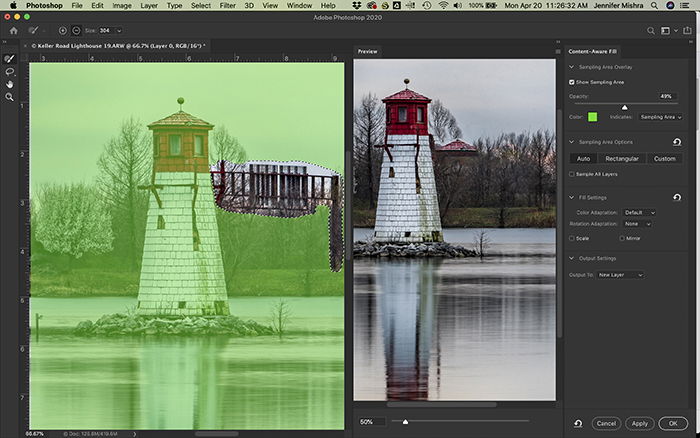
They’d filmed the plate with a reference vehicle, always intending to render a digital van. The shot was a very simple pan of a van driving past, but for whatever reason the real van wasn’t available.

The van shot was not in the original edit as it had been deemed too hard. STOP to FIX is an entry level concept of any successful logistics operation that could greatly reduce the amount of Adobe clients coming here to ask the same questions over and over again because they want to use a bandaid on a wound that clearly needs stitches.I was really surprised at how well the result worked, especially as I hadn’t done much work by myself.
#Adobe after effects content aware fill manual
Here is the question: What RAM usage perameters are reccommended to takefull-advantage of every feature in Adobe After Effects and why does "content-aware fill" not seem to adhere to those numbers? What adjustments, if any, can be made to prevent users from encounters with high RAM usage when using this feature? It doesn't matter what the work flow, footage type, or compostion length is if the feature is failing because after effects clearly supports whatever footage type we are using and if CAF works better with a specific footage codec that would be helpful to know or to be included in the manual for reference. How much more direct do we need to be to get an actual answer from the no-so wise guys who get offended when they have yet to develop a solution to the issue at hand.
#Adobe after effects content aware fill software
Yeah, I do find it interesting when the so-called experts fail to acknowledge the issue at hand by deflecting your killshot to the failing software until it inevitably ricochets right back into you and your work flow for the project. It's easy to do if you paid attention to the position and comp size values in the pre-comps, but it's also easy to do if you set the blend mode to difference when you get close to matching the original footage and slide things around a pixel at a time until the overlay is completely black. When CAF has completed it's work you can drop that comp in your original footage and position it over the original shot. That is probably going to be a lot faster than trying to use Content-Aware Fill.Īnother option may be to put your footage comp that is only about 1/4 the size of the footage, pre-compose the footage again, then run CAF on the much smaller pre-comp so there are a lot fewer pixels to analyze. You can animate the time offset, You can animate all of the brush properties. When the first frame has been repaired expand up the paint tool in the timeline and you will see that you can animate all kinds of properties, If the sample point needs to move you can animate that.

I would probably just apply a clone brush to the first frame of the image sequence using the Clone tool in After Effects. Another advantage, it is a lot faster for AE to decode a PNG sequence than it is to decode a DNG sequence so all of the processing is going to be a little faster. In many cases, you only have fix 1 and then apply the fix to all in the batch.

Another advantage of resizing and exporting a new image sequence in Lightroom is that it's easy to fix a lot of images with sensor dust in Lightroom. If your cloud timelapse is HD then instead of CAF working with a 6000-pixel wide image, it will be working with one that is only 1920 wide. I will make one color correction and apply that to all images so there is no flicker, set the height or width to match the comp size, then run the export and import the images as an image sequence. My standard timelapse workflow is to resize the images in a batch export from Lightroom. What is the final frame size of your final comp? Unless your image sequence is somewhere close to 100% scale in the comp, your images are too big. Even if you wanted to make the entire background look like this blue background drape you would be far better off saving a frame as a PSD file and using Photoshop's clone tools to repair the background than hoping CAF would do the job. If at all possible trim the shots to include just the frames you need to fill.

The cropped screenshot you provided gives us no information about the format of the footage, the length of the comp or the shot, or your workflow.įor future reference, any shot over a few seconds is a very poor candidate for content-aware fill. Please embed your screenshots in the future and include the entire UI. The only thing I know about your project is that CAF is the wrong approach. I downloaded your screenshot, created a comp, drew a single rectangular mask, and applied Keylight with the following adjustments: It will take about 2 minutes if the camera is locked down and maybe 10 if it is a handheld camera with a lot of movement. If it works at all you are going to have to create a PSD reference frame that is all filled with blue.Īll it takes is a garbage matte and Keylight. Content-Aware Fill is just about the worst possible solution for fixing this shot.


 0 kommentar(er)
0 kommentar(er)
